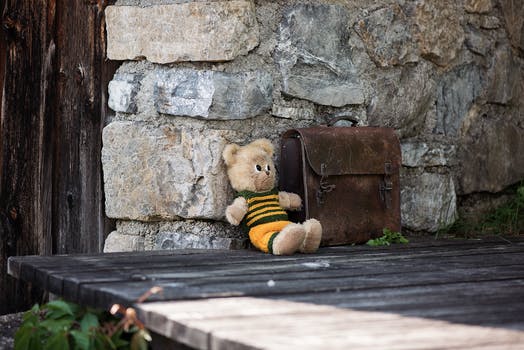That loneliness is a modern-day epidemic has become a cliché. Yet a cliché becomes one because it expresses a fundamental truth. Psychologists and mental health experts observe that human beings “are wired to be social on such a deep level that social isolation is actually processed similarly to physical pain by our mind”. Even more seriously, “loneliness is bad for our health and well-being, indeed, loneliness seems to be as big of a risk for mortality as other well-established conditions (e.g. obesity; heavy smoking)”.
These facts should really worry us because in today’s world loneliness is endemic. The causes of loneliness are many, and it’s important to distinguish between being lonely and being alone. Loneliness is not about being alone, you can be a shut-in and still maintain an emotionally rewarding existence. You can be in the midst of a bustling, chaotic city and feel deadly lonely. It’s about a mental state, it’s about alienation, feeling unconnected psychologically to the environment and to those around you. In short, loneliness can be directly related to the kind of life that post-globalization has created for us.

For one thing, increasingly sophisticated technology has changed the nature of communication. “Communicating” with total strangers on a disembodied social platform such as Comment boards, or even Facebook, does not fulfill our emotional needs. Indeed, this is true not only for those engaged in social communication, but while telecommuting has been a boon in some ways to those who can work from home, it has also robbed us of precious human contact. Those who would have been interacting face-to-face with their colleagues today interact directly with their technological gadgets instead.  The camaraderie that used to be part of the workday has disappeared. The proverbial—and perhaps only metaphorical–chat around the water cooler broke the monotony of the workday routine and refreshed the mind. Even the inevitable conflicts that arose in that environment served a healthy purpose. Problem solving and conflict resolution not only exercise the mind, but define a richly diverse human relationship. The absence or diminishment of face-to-face interaction has stripped this aspect of communication down to the bone.
The camaraderie that used to be part of the workday has disappeared. The proverbial—and perhaps only metaphorical–chat around the water cooler broke the monotony of the workday routine and refreshed the mind. Even the inevitable conflicts that arose in that environment served a healthy purpose. Problem solving and conflict resolution not only exercise the mind, but define a richly diverse human relationship. The absence or diminishment of face-to-face interaction has stripped this aspect of communication down to the bone.
Thus, while it may be true that being alone is not the equivalent of being lonely, I would point out that science also tells us that humans need to be touched, both figuratively and literally. Communication happens not only through typed words, but by looking into a human face, reading body language, looking into your eyes. Yet in a post-globalized world we learn to communicate remotely from the time that we’re children.
In an article in Psychology Today we learn that scientists have been pondering whether too much screen time for children could in fact be contributing to the ever-increasing cases of autism. After examining a sample population, they “found a strong trend: children presenting with autism were spending four or more hours a day watching some kind of screen: television, computer, tablet, or phone.” To test this finding, they asked the parents to take the children away from the screens and have them engage more in social activities, in particular outdoors. Incredibly, the results showed that, “Yes, symptoms resolved, leading the doctor to identify something entirely new: ‘Virtual Autism,’ or autism induced by screens.” The resolution was not quick, the older the child, the longer it took. For 8 year olds it took as long as 2 years. According to Dr. Leonard Ostreicher, even for skeptics “this should be earthshaking information”.

The verdict is still out on whether the correlation between screen time and autism is definitive or not and I would certainly not tout screen withdrawal as a cure for autism, we simply don’t know enough about ASD to reach such a conclusion, but we do know that a responsible researcher needs to investigate every lead, and these findings are very suggestive. In any case, whether we consider children with autism or senior citizens isolated in their homes, biology teaches us that lack of human contact can, literally be deadly. Of course virtual communication is better than none, but Facebook can only do so much to keep you connected to your fellow human beings.
In a world as complex as ours has become, diminished in-person communication is not the only cause of loneliness and alienation. In some respects political correctness is equally to blame. Not too long ago people could still share opinions, thoughts, and attitudes without coming under the relentless scrutiny and micromanagement of political correctness. Today it is no longer acceptable to ask about a person’s religion, occupation, origins, family ties– the very stuff that used to create bonds and connections between people. Eliminating those fertile areas of communication leaves very few points of contact on which to build a relationship, consequently conversations are impoverished and are reduced to mere formalities and superficialities. And let’s not even consider physically touching anyone outside our own family. “Invasion of personal space” has become grounds for law suits. Indeed, in “A Thanksgiving reminder: Why your child should never be forced to hug a relative”, we’re warned that a less-than-spontaneously felt kiss to grandma can traumatize little Johnny for life or make little Mary vulnerable to sexual abuse in her teenage years.
This sense of detachment and these sterile relationships, devoid of the human touch both literally and figuratively, contribute to loneliness and the sense of alienation. This can lead to depression. And while depression does not necessarily lead to suicide, people who eventually succumb to suicide are frequently afflicted by depression. In a recent survey The US Centers for Disease Control and Prevention published a survey that warned us that suicide is a growing problem in the United States, showing that rates have increased by 25% over nearly two decades ending in 2016. The report finds that twenty-five states have experienced a rise in suicides by more than 30%. If this doesn’t sound the alarm bell and prompt us to look for the causes of this steep increase then I don’t know what would.
The recent suicide of celebrity designer Kate Spade, followed three days later by that of television personality and chef Anthony Bourdain has drawn much needed attention to this frightening upswing. Clearly it would be simplistic to point to this cause or that one, but we would be better served if we were to stop to think about the kind of human relationships that we have today. Suicide represents the ultimate loneliness and detachment. That’s why suicide prevention hotlines frequently succeed in preventing them, because feeling connected to another human being at a critical moment, in some meaningful manner, can revive lost hope.












